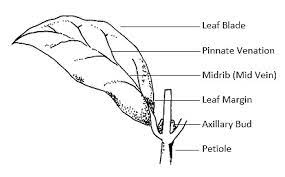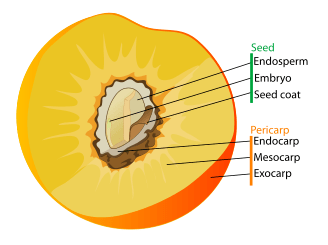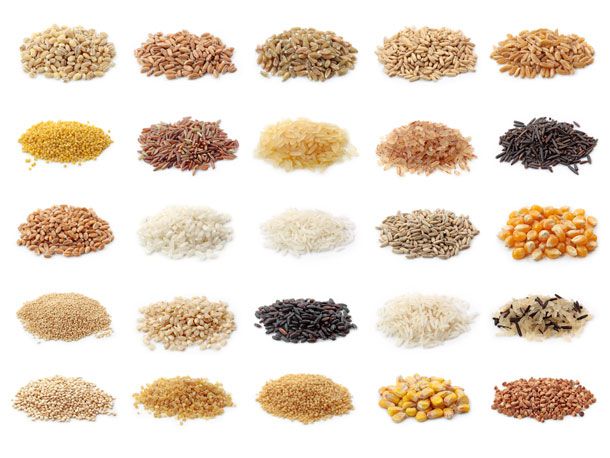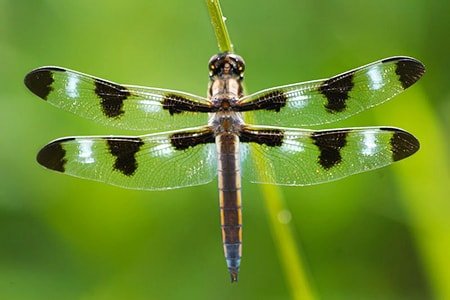Trees have been on the Earth from around 370 million years. Interestingly, according to a 2015 estimate, the world’s tree population is about 3.04 trillion, with 1.39 trillion or 46 per cent in the tropics or subtropics, 0.61 trillion or 20 per cent in temperate zones, and 0.74 trillion or 24 per cent in coniferous boreal forests. Now, how could one go on to define a tree? A tree is a type of perennial plant that has an extended stem, or trunk, that supports branches and leaves. Trees are not a taxonomic category, but rather a collection of plant species that have evolved a trunk and branches to rise above other plants to compete for sunlight. In this article, we will discuss the various parts of a tree and their function.
Parts of a tree and their function
A mature tree consists of three main parts, the roots, the trunk and the crown.

The root system
Beginning with the things closer to the ground, so, let us look at the roots of a tree, first. Roots are sophisticated systems that reside underground and thus, are not apparent to the naked eye. The roots serve as the tree’s anchor and can spread up to twice as broad as the tree’s crown.
Functions
As mentioned previously, the primary function of roots is to anchor the tree to the ground. This is indeed a vital function as the tree ages and is exposed to severe factors that threaten its stability. In addition to anchoring the tree, roots also perform the function of extracting water and minerals from the soil.
Types
Roots develop beneath the ground from the bottom of the stem and extend laterally under the soil. Although the majority of a tree’s root system is merely 12 to 18 inches below the soil’s surface, the actual depth of a root system on the other hand is strongly influenced by the type of tree and the nature of the soil in which it grows.
A tree root system has five different types of roots. They are as follows:

- Tap roots: Taproots are big, central, and dominant roots from which other roots grow laterally. Every tree begins as a tap root, but, additional roots eventually outgrow the taproot.
- Lateral roots: These roots extend outwards from the soil’s surface. They absorb a large amount of water and nutrients while also anchoring the tree.
- Oblique roots: Oblique roots, sometimes known as the heart roots, develop diagonally and also absorb water and minerals.
- Sinker roots: Sinker roots grow downwards from the lateral roots to a depth of several feet. In addition to boosting the stability of the tree, these roots also take up any water and nutrients which might be present deep beneath the soil.
- Fine roots: All of the aforementioned root forms may produce fine roots where water and nutrients are immediately absorbed. In addition, these roots also harbor Mycorrhizae, which are fungal species that boost root absorption capacity.
Morphology

In a cross-section of a root, you can see 3 regions of root morphology. They are as follows:
- The root cap of young roots aid root penetration into the soil.
- The apical meristem located behind the root cap generates new root cells that eventually contributes in lengthening of the root.
- Root hair absorbs water, minerals and nutrients from the soil.
Root microbiome

The root microbiome is a varied community of soil microorganisms that include bacteria, fungus, and archaea. Bacteria that fix nitrogen and stimulate plant development are examples of beneficial microorganisms. Other examples include mycorrhizal fungi, mycoparasitic fungi, protozoa, and some biocontrol microorganisms.
Pathogenic microorganisms like bacteria, pathogenic fungi, and nematodes also reside in the root system. These compete against protective microorganisms for nutrients as well as bypass the intrinsic plant defence systems, thus, damaging the plant.
Tree trunk
Trees have a more permanent structure in place of a fragile stem. This structure is called the trunk. Wood in the core of trees, indeed acts as something which makes trees more durable and contributes to their incredible lifespans.
Functions
The trunk of a tree serves two purposes. The initial function of a tree trunk is to provide size and form. It is the pillar of strength that gives structural support for the tree’s branches and leaves to grow upward and outward.
The second function of a tree trunk is to serve as the transport system’s centre. The trunk supports the transfer of water and minerals from the soil’s roots to the branches and finally, the leaves. The trunk also aids in the transport of sugar from the leaves and branches to the roots.
Parts of a tree trunk
A cut across the trunk of a tree offers an interior view of the many regions of a tree trunk. From the inside, the regions are as follows:

Pith
Pith, also known as the medulla, is a tissue found in the stems of vascular plants. It is the core of the trunk and the sapling’s first source of nourishment. The pith is made up of parenchyma cells, which are soft, spongy cells that store and distribute nutrients throughout the plant.
Heartwood
This is the densest and the heaviest section of the trunk, with the darkest-coloured wood. The non-living xylem cells of the heartwood serve primarily to strengthen and maintain the tree. In addition, the heartwood is also vital in tree physiology as a storehouse for sugars, pigments, and oils.
Sapwood
The third layer of vascular tissue is known as the sapwood. It is made up of thick-walled cells that transfer sap from the roots to the crown. The xylem cells present in this region are young and thus, pale in colour. As xylem cells mature, they become dormant and form the heartwood of the tree.
Cambium
The cambium is a layer that produces partially undifferentiated cells for plant growth, thus, increasing the tree’s thickness. It is from this region that the xylem and phloem grow by division. Each growth season, the tree adds a new cambium layer. This causes the trunk to form yearly rings, which may be understood as the contributing factor towards increasing the age of the tree.
Phloem

The layer that follows the cambium tissue is the phloem. Its function is to transport sap containing sugar (that has been converted from leaf photosynthesis) all around the tree and back down to the roots.
Bark
The bark is the outer coat of the tree that protects it. The bark is made up of dead phloem cells that shed outward. It serves several purposes, including insulating the tree from extreme heat or cold, as well as providing protection against insects and illnesses. The bark of a tree can be extremely thin or up to 6 inches thick. Furthermore, it can be of a variety of colours. Dead bark can flake or peel off in sections or strips depending on the species.
Medullary ray
These are living cells that run across the growth rings and allow the sap to be transported radially.
The crown
The crown refers to the portion of the tree that lies above the trunk. It includes leaves, branches, flowers and fruits. Let us look into each of these in more detail.
Leaves
Leaves are the green component of a plant that stays connected to the crown. They generally make up 5% of a typical tree.
Functions
The most well-known function of leaves is to undertake the process of photosynthesis. During photosynthesis, the leaves convert carbon dioxide and water into oxygen and sugar or carbohydrates in the presence of sunlight and the green pigment i.e. chlorophyll. The energy that catalyses this reaction is provided by sunlight. Therefore, leaves are often known as factories of a tree.
In addition to photosynthesis, leaves provide shade, reduce wind force, keep the air cool, and filter out dust and other pollutants. Leaves also serve as a barrier for heavy raindrops, reducing their impact on the ground below.
Morphology
A leaf has the following structures:

- A leaf stalk, also called a petiole.
- A lamina, also known as the leaf blade, is a flat structure that contains chloroplasts.
- Stipules are small structures positioned on each side of the base of the petiole.
- A sheath is a structure at the base that entirely or partially covers the stem above the node to which it is linked. Leaf-sheaths are most common in grasses and Apiaceae.
External leaf traits like leaf form, edge, hairs, and the presence of stipules and glands are widely used to identify a plant’s family, genus, or species level.
Arrangement of leaves
Another characteristic we will look at is the arrangement of leaves on a stem, also called phyllotaxis. Nature contains a wide range of phyllotactic patterns, including:

- Alternate: In this arrangement, one leaf connects to each point or node on the stem, and leaves orientate themselves to varying degrees down the stem.
- Basal: This implies that the leaves arise from the stem’s base.
- Cauline: An arrangement where leaves develop from the aerial stem.
- Opposite: In this arrangement, at each point or node on the stem, two leaves emerge.
- Decussate: A counter-arrangement in which each consecutive pair of leaves is rotated 90 degrees from the preceding one.
- Verticillate or whorled: At each point or node on the stem, three or more leaves, branches, or flower parts are attached. Subsequent whorls may or may not be decussate, meaning that may or may not be rotated by half the angle between the leaves in the whorl.
- Rosulate: This arrangement implies a circular arrangement of leaves from a single point.
- Rows: The term implies the attachment of the leaves in a row, either in an alternate or opposing fashion.
Branches
Branches and stems are structural and transportation components of the tree that connect the trunk to the leaves. They make up around 15% of a tree’s total mass.
The thicker limbs that develop directly from the trunk are referred to as branches, while the smaller fingers that develop from the branches are called stems and twigs. Leaves sprout from the stems and twigs. Many trees have branches that grow directly from the trunk, followed by an extensive network of stems or twigs. Other trees’ branches grow in unusual orientations and may even swirl or twist to obtain more sunshine.
Depending on the tree, certain branches may grow taller than the branches of neighbouring trees in order to dominate them. This is known as a dominating tree, which seeks as much sunshine as possible.
Functions
Branches and stems serve a variety of purposes. They provide structural support for the leaves, fruits, and flowers produced by the tree. They also transport water from the soil to the leaves and food from the leaves to the rest of the tree. Furthermore, branches store wasted food that the tree will need later, particularly during dormant times when temperature decreases.
Flowers
The most colourful and appealing component of the plant is a flower. Flowers are attractive and of various colours, shapes and sizes to attract pollinators to help transfer pollen.
Function
The primary function of a flower is reproduction. All flowering plants are heterosporous, which means that each plant generates two types of spores. Meiosis produces microspores within anthers, while megaspores are formed in ovules within an ovary. These microspores develop into gametes which then fuse to form a zygote, a cell that gives rise to a plant in the future, in a process called fertilization.
Parts of a flower

| Part | Definition |
| sepals | The green structure outside the flower. |
| calyx | Refers to all of the sepals outside of the flower together. |
| corolla | This term refers to the petals of a flower collectively. |
| stamens | The structure of the flower that produces pollen. |
| filament | This slender stalk holds the anther. |
| anther | This structure contains pollen in a flower. |
| carpel | Refers to the female portion of the flower. It includes the style, sigma, and a single ovary. Some flowers may have more than one carpel. |
| pistil | Also refers to the female parts of the flower. Pistils may be separated or fused together into a compound pistil. |
| stigma | Refers to the structure on which pollen lands for fertilization to occur. |
| style | This is a tube that is a part of the carpel. |
| ovary | Refers to the large bottom portion of the carpel which contains the ovules. |
| ovules | This is the part of the ovary that is the female gametophyte. IT becomes the seed after fertilization. |
Fruit
A fruit is the edible portion of the plant that grows when a flower is fertilized.

Function
A fruit’s main purpose is to disperse seeds, thus, allowing the plant to reproduce. As a result, all flowering plants produce fruit, regardless of whether the fruit is edible, sweet, or soft. Fruits include acorns, maple keys, and the exterior of sunflower seeds.
Varieties of fruits
Simple fruit
These fruits are produced by the monocarpellary or multicarpellary syncarpous ovary (an ovary with fused female reproductive parts known as carpels) Here, the gynoecium produces only one fruit. They are of two types:
- Fleshy fruits: The fruit wall of fleshy fruits is classified into an epicarp, mesocarp, and endocarp. Superior or inferior syncarpous gynoecium gives rise to these fruits.
- Dry fruits: These fruits contain a pericarp that is often dry and rigid. Furthermore, the fruit wall is not classified into three different layers.
Aggregate fruits
These are the fruits produced by the multicarpellary apocarpous ovary (an ovary with free female reproductive parts known as carpels). As each carpel is isolated from the others in the ovary, it develops as a clump of fruits, also known as an etaerio. Types of aggregate fruits:
- Etaerio of follicles: Each fruit is a follicle. Calotropis, Catharanthus, and Magnolia are a few examples.
- Etaerio of achenes: Here, the bunch of fruits that are fused together. For example, Ranunculus, Strawberry, Rose, and Lotus.
- Etaerio of berries etaerio: A collection of little berries. For example, Polyalthia and Annona squamosa.
- Etaerio of drupes: Many little fruits emerge from separate carpels in this sort of fruit. For example, raspberry.
Composite Fruits
False fruits are all composite fruits. They are formed when several ovaries and other floral elements combine to create the fruit. There are two kinds of composite fruits:
- Sorosis: These fruits form develop from the spike, spadix, or catkin inflorescence. Jackfruit and Kevda are two examples.
- Sycosis: These fruits grow from the flower of hypanthodium. The stem becomes hollow and develops a pore surrounded by microscopic scales. Ficus species are a good example.
Classification-of-Flowering-Plants-Fruits-and-Seed-min– Download HERE
Summary
| Parts of a tree | Parts of a tree | Functions |
| Roots | Roots | Anchor trees to the ground |
| Facilitate oxygen, water, and mineral uptake from the soil and carry water and minerals inward toward the stem. | ||
| Trunk | Trunk | Provide structural support to the tree |
| Aid in the transport of water and minerals from the soil’s roots to the branches and leaves | ||
| Crown | Leaves | Photosynthesis |
| Filter out dust and pollutants | ||
| Serve as a barrier for heavy raindrops | ||
| Reduce wind force | ||
| Branches | Transport water from the soil to leaves and flowers | |
| Store food during winter times | ||
| Flowers | Production od seeds | |
| Fruits | Disperse seeds, thus, allowing the plant to reproduce |
FAQs related to Tree Parts
What can you make out of a tree trunk?
You can use a tree trunk to create several interesting DIY projects. Some examples are:
- Hollow out the centre to transform the tree stump into a planter.
- You can also make illuminated tree stumps by hollowing out the centre to fix a bulb or LED strips. The light shines through the cracks on the timber.
- You can create a fairy house for your garden using a tree stump.
- Paint tree stumps with glow in the dark paint to create stunning campfire stools.
- Using broken tiles, create a beautiful mosaic on top of the tree stump. This will surely add to the beauty of your garden.
- Create a side table using a tree stump.
- Turn tree stumps into stepping stones for your garden. You can also paint the tops of the stumps with numbers to convert them into hopscotch stepping stones.
Do tree stumps regrow?
Stumps, both ground stumps and stumps of cut branches, can occasionally regrow into new trees. A chopped deciduous tree, for example, will frequently re-sprout in several locations around the stump or from the roots.
What are some of the negative consequences of tree cutting?
Deforestation is defined as the planned, natural, or unintentional loss of trees. It may exist in any place highly inhabited by trees and other plant life. Deforestation has several negative consequences, which we will discuss below.
Loss of habitat
Trees offer refuge for several animals. Thus, cutting down trees destroys their home, which in turn, may lead to the extinction of the animals in the long run.
Temperature regulation
Trees have large canopies that control the temperature on the ground. Deforestation causes a more dramatic temperature fluctuation from day to night, similar to that of a desert, which might be deadly for many residents.
Increased release of greenhouse gasses
Aside from the loss of habitat, the absence of trees allows for a larger release of greenhouse gases into the atmosphere. Healthy forests collect CO2 from the atmosphere and serve as excellent carbon sinks. Deforested regions lose this capacity, thus leading to more carbon release.
Reduced water in the atmosphere
Trees also assist to manage the amount of water in the atmosphere by regulating the water cycle. There is less water in the air to be returned to the land in deforested regions. This results in drier soil and an inability to cultivate crops.
Soil erosion
Without woods, soil erodes and washes away, forcing farmers to relocate. The barren ground left behind as a result of these unsustainable farming techniques is more vulnerable to floods, particularly in coastal areas.
Greatly impact livelihoods of local people
Forests support the livelihoods of 1.6 billion people worldwide, one billion of whom are among the world’s poorest. These people heavily depend on forests for their survival and to gather materials for their small-scale agricultural processes. Thus, large companies taking over forest lands to construct industries, greatly impact the lives of local people.
Share with your friends






